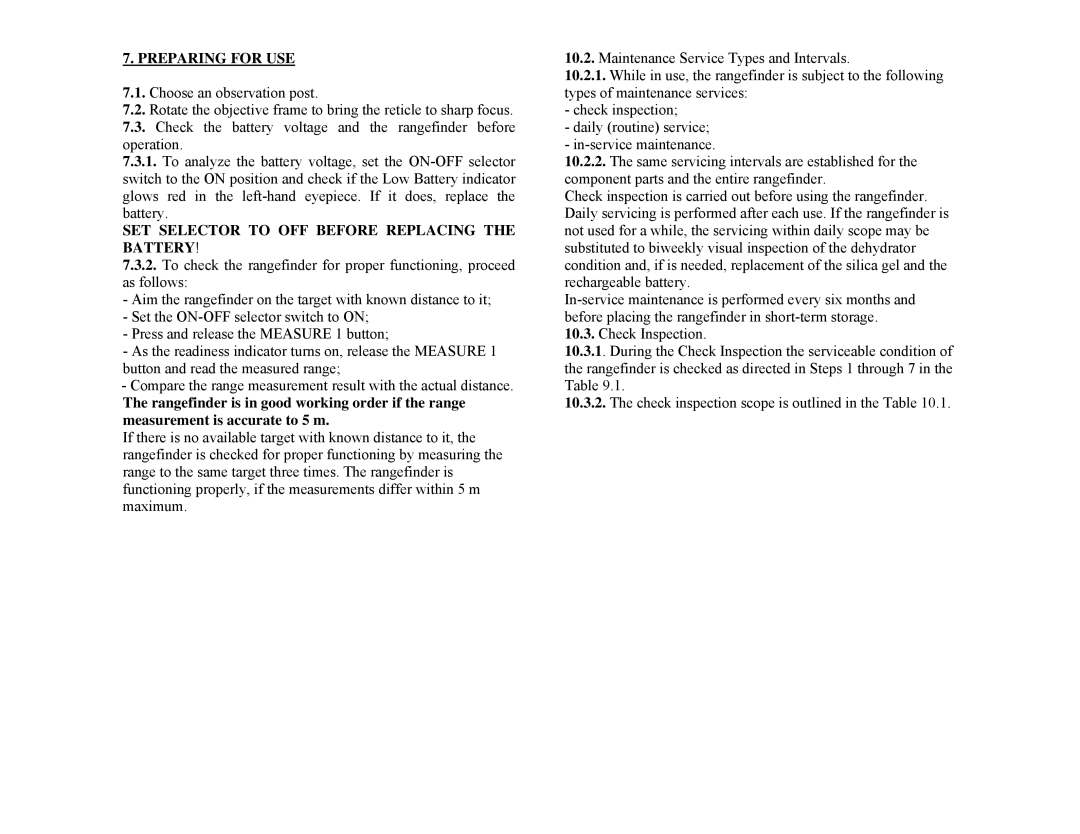7. PREPARING FOR USE
7.1.Choose an observation post.
7.2.Rotate the objective frame to bring the reticle to sharp focus.
7.3.Check the battery voltage and the rangefinder before operation.
7.3.1.To analyze the battery voltage, set the
SET SELECTOR TO OFF BEFORE REPLACING THE BATTERY!
7.3.2.To check the rangefinder for proper functioning, proceed as follows:
- Aim the rangefinder on the target with known distance to it; - Set the
- Press and release the MEASURE 1 button;
- As the readiness indicator turns on, release the MEASURE 1 button and read the measured range;
-Compare the range measurement result with the actual distance.
The rangefinder is in good working order if the range measurement is accurate to 5 m.
If there is no available target with known distance to it, the rangefinder is checked for proper functioning by measuring the range to the same target three times. The rangefinder is functioning properly, if the measurements differ within 5 m maximum.
10.2.Maintenance Service Types and Intervals.
10.2.1.While in use, the rangefinder is subject to the following types of maintenance services:
- check inspection;
- daily (routine) service; -
10.2.2.The same servicing intervals are established for the component parts and the entire rangefinder.
Check inspection is carried out before using the rangefinder. Daily servicing is performed after each use. If the rangefinder is not used for a while, the servicing within daily scope may be substituted to biweekly visual inspection of the dehydrator condition and, if is needed, replacement of the silica gel and the rechargeable battery.
10.3.1.During the Check Inspection the serviceable condition of the rangefinder is checked as directed in Steps 1 through 7 in the Table 9.1.
10.3.2.The check inspection scope is outlined in the Table 10.1.
